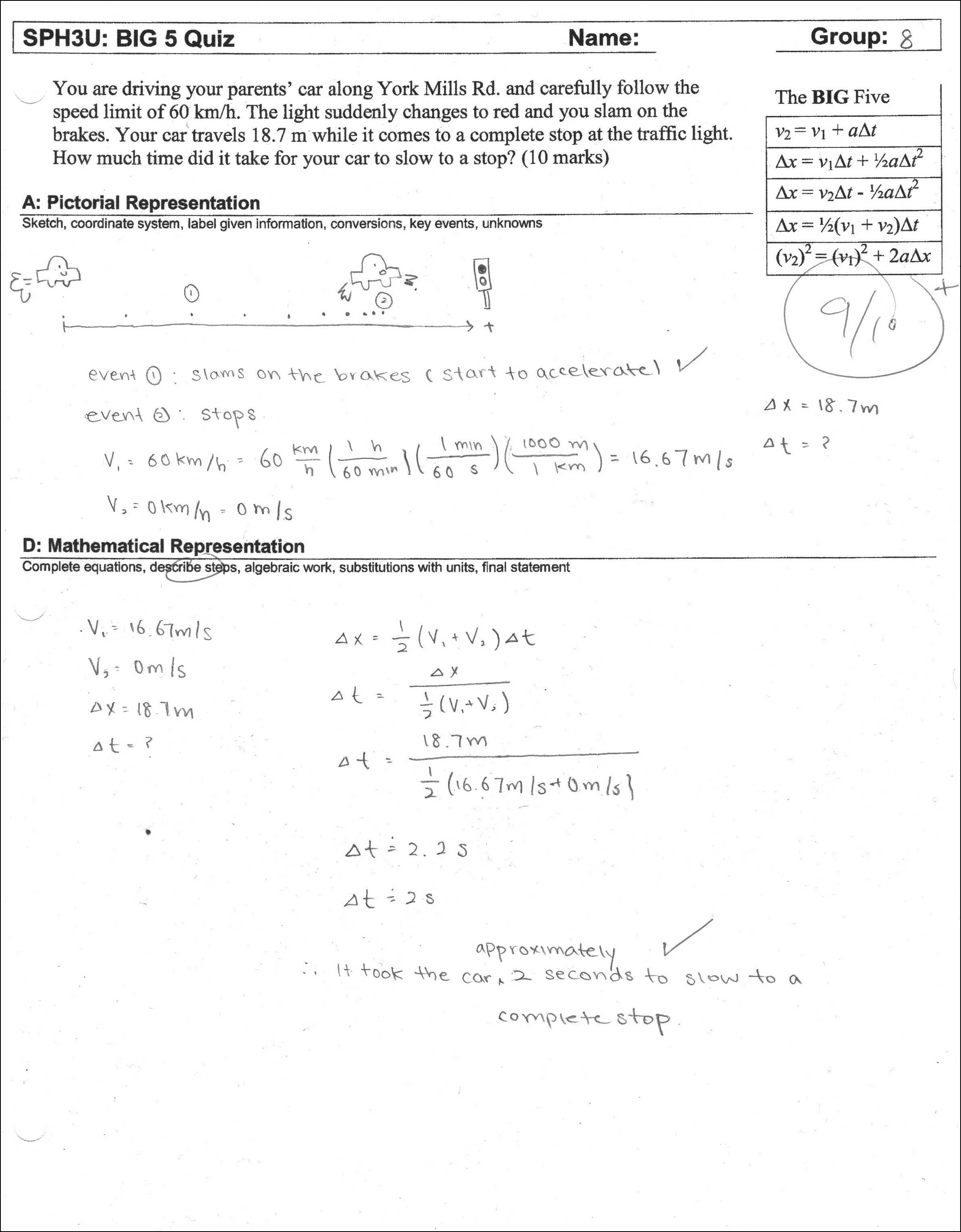To make room for more thoughtful homework practice, I have curbed my reflexive habit to assign questions 1–7 at the end of each day’s section in the text. Instead, I choose just a couple of decent, somewhat insightful questions and expect them to be done well. To help my students do their work in a thoughtful manner, I provide them with a solution sheet (
blank,
model,
sample) that emphasizes multiple representations. Students have a much better chance of developing a deeper, more nuanced understanding of physics if they can explain a situation from a number of different physics angles using a variety of tools. Even the
College Board of AP Physics fame has caught on to the value of multiple representations—which means this is well overdue.

My own solution sheets are modeled after those presented in Randall Knight’s fine tome
Five Easy Lessons. To get credit for their homework, my students must solve their problems according to this format. The amount of detail and thinking that goes into one solution, even for a lackluster textbook question, becomes impressive. A crucial benefit of multiple representations that is it allows students to begin to think about self-consistency. Does the force diagram agree with the position graph? Do the events labeled in the sketch coincide with the right moments in the motion diagram? This is an instinctive process for many experts but is seldom ever practiced by novices. Another benefit is how abstract equations become more meaningful. Students learn to see in many ways what those odd symbols and numbers represent. My tests and quizzes follow up on this new process asking for particular parts of the solution or the full monty. Notice that I don’t ask students to memorize the detailed procedure—that’s not the point. I reproduce the solution outline on their tests and quiz pages and instruct them to use the headings as a checklist. The headings are also great for quick feedback as well.







